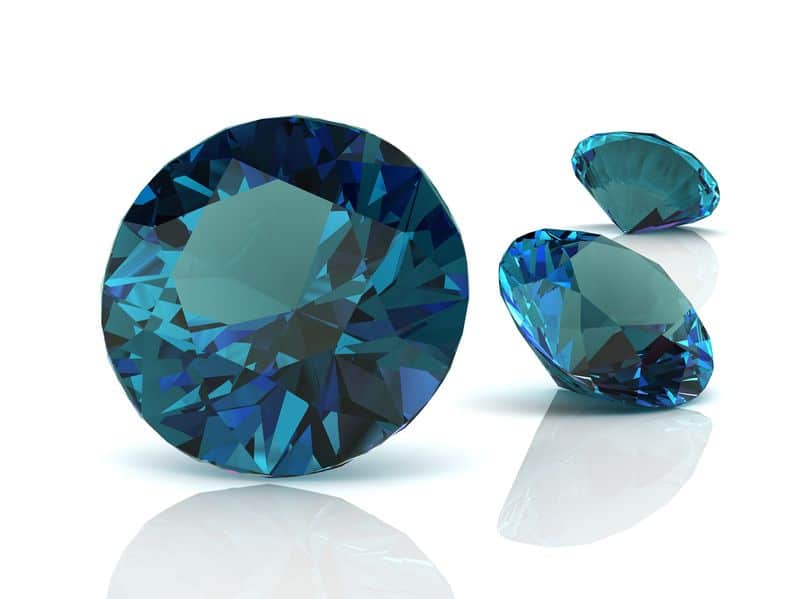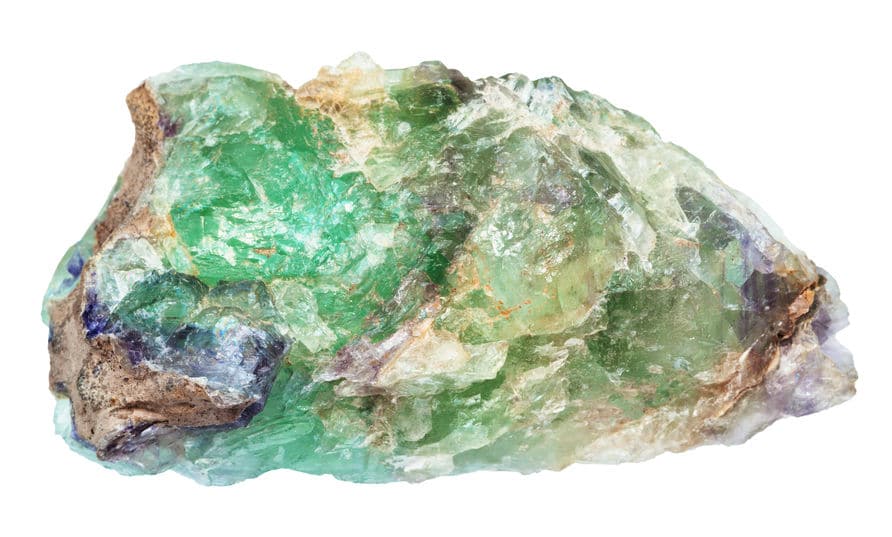
June’s birthstone, Alexandrite is a very rare gem. Consequently, they can be very expensive. Plus, their price increases dramatically as they get to a full carat in size. Want a ballpark idea of its price? Fine-quality alexandrite up to one carat sells for $2500 to $15,000 per carat. And for sizes over one carat expect prices from $50,000 to over $70,000 per carat!
Added in the 1950s to the official birthstone list, Alexandrite is the gemstone alternative to June’s traditional pearl. (Moonstone is also an alternative birthstone for June.) Plus, Alexandrite is the gem for the 45th and 55th wedding anniversary.
June Birthstone Meanings & Symbolism
Alexandrite correlates with the astrological sign of Scorpio.
- Some cultures strongly associate it with good fortune.
- Furthermore, it’s said Alexandrite enhances creativity and focus.
- Create a more balanced emotional state for yourself with this gem.
- It helps bolster your peace of mind and assists you with interacting in relationships.
- Grow your generosity with Alexandrite.
- Alexandrite helps you to forgive people who have wronged you.
- Assists in centering yourself and aids in your ability to experience joy.
Alexandrite Color Changing Properties
Alexandrite is the chameleon of the chrysoberyl family. It’s a gemstone that actually changes colors. Seeing alexandrite under the sun or fluorescent light, it looks green. But, in incandescent light or candlelight, it looks red. Therefore, people refer to it as “emerald by day, ruby by night”. These gems can range from a 5% – 100% color change. Stones exhibiting a 100% change are the most valuable. In addition, the most favored and expensive color ranges are bluish-green and deep purple-red.
This color change phenomenon in all gemstones is often referred to as “the Alexandrite effect.”
Even rarer and captivating is the cat’s eye Alexandrite which also has that incredible color change. Plus, these beauties have needle-like filaments running down the middle of the stone. As a result, these filaments give it the cat’s eye look. Consider yourself lucky if you’ve gotten to see one of these rarities.

The Origins of Alexandrite
In Russia, large deposits were first found in the Ural Mountains on the Czar’s birthday in 1830. Henceforth, the gem was known as Alexandrite after Czar Alexander II, who liberated the serfs. No doubt, this royal name raised the gem’s prestige and status. After all, the Russian Czars were outstanding as the standard in their era for luxurious opulence.
Unfortunately, the stunning deposits of Alexandrite from Russia’s Ural Mountains are now exhausted. These days, Alexandrite mostly comes from Sri Lanka, East Africa, and Brazil. Although gorgeous Alexandrite is still mined today, the finest quality is very rare and expensive.
You can also search for this rarity in antique jewelry set with the favored Ural Mountain Alexandrite.
Beware, Alexandrite Has Imposters
Fake Alexandrites were very popular in the 1920s. Genuine natural Alexandrite is expensive. Consequently, there’s a lot of imposter Alexandrite out there of various types. So, here’s a little trick to look for.
Take note of any jewelry advertisements that list any gemstone in quote marks, like an “Alexandrite” ring or a “Ruby” pendant. These stones are imposter stones or a fake of some sort.
What many travelers around the world buy as “Alexandrite” is usually made from corundum interlaced with chromium or vanadium to get a similar color change. Selling for only a few dollars, these stones exhibit a color change somewhat like real Alexandrite. However, a true Alexandrite’s change is remarkable.
Then There’s Synthetic Alexandrite
Synthetic Alexandrite is lab-grown. It mimics the same physical and chemical properties as natural Alexandrite. Synthetic versions do tend to have different coloring; a blue to purple color change is the mark of a hydrothermal lab-grown Alexandrite.
It’s more costly to synthesize an Alexandrite than almost any other gem. And yet, they are still considerably more affordable than a natural Alexandrite. A synthetic version from a reputable jeweler may be the right choice for you.
Where Can You Buy Alexandrite Jewelry?
You can trust us at Copeland Jewelers to be your personal guide when purchasing a genuine or synthetic alexandrite. We’ll give you good advice whether it’s for a June birthday gift, 45th or 55th wedding anniversary, or if you’d like a synthetic Alexandrite in a custom ring.
